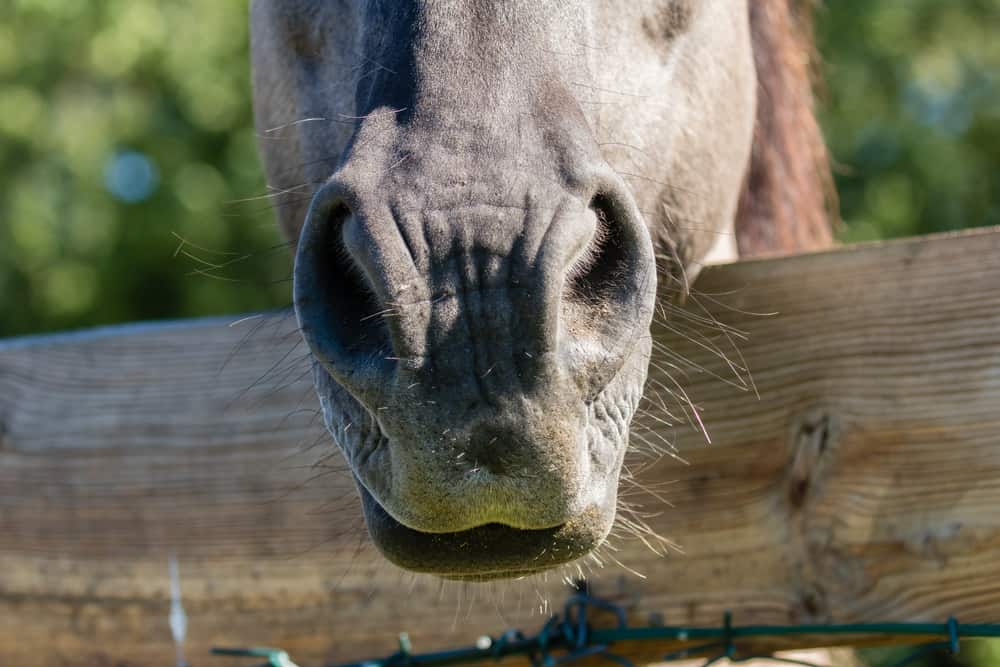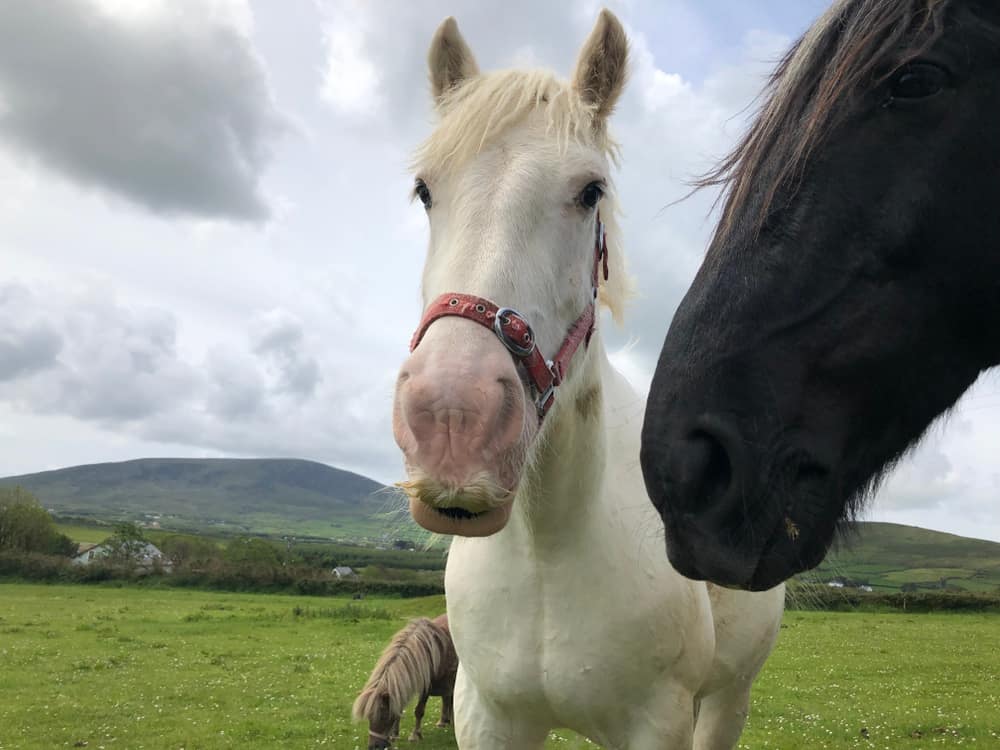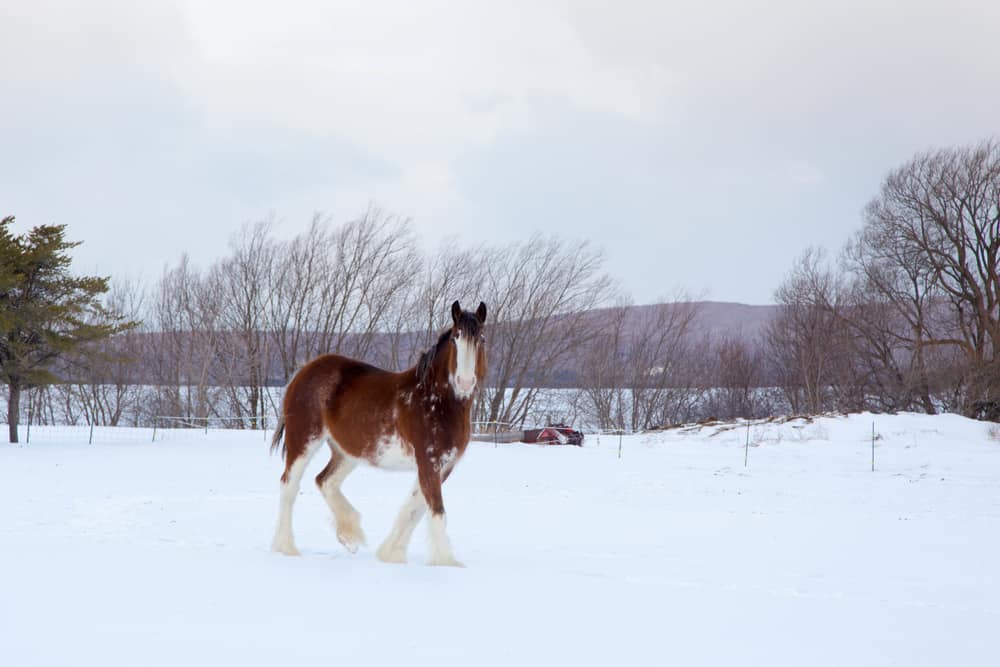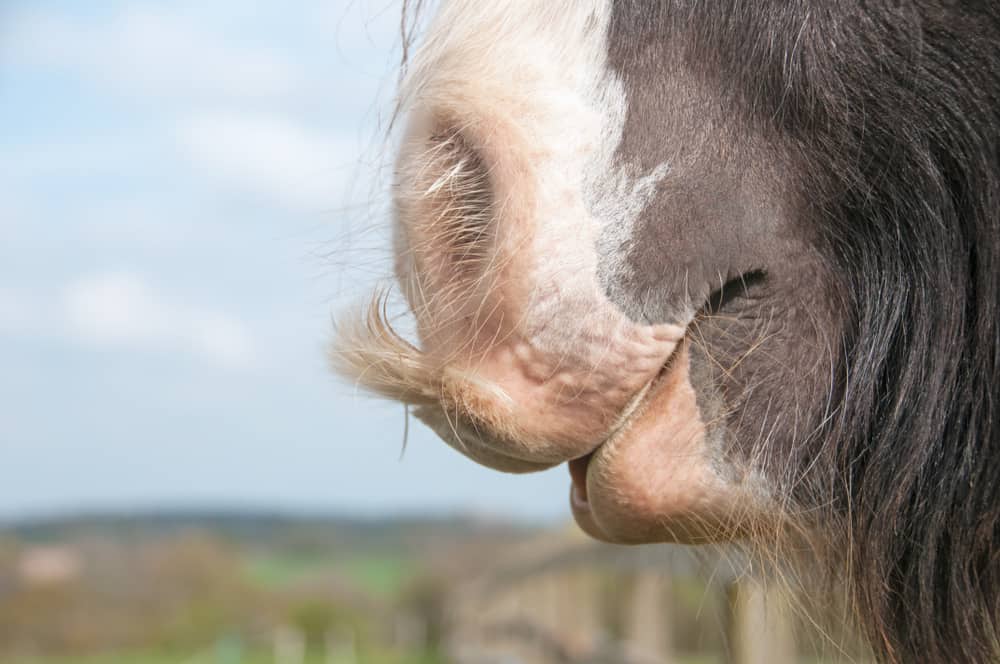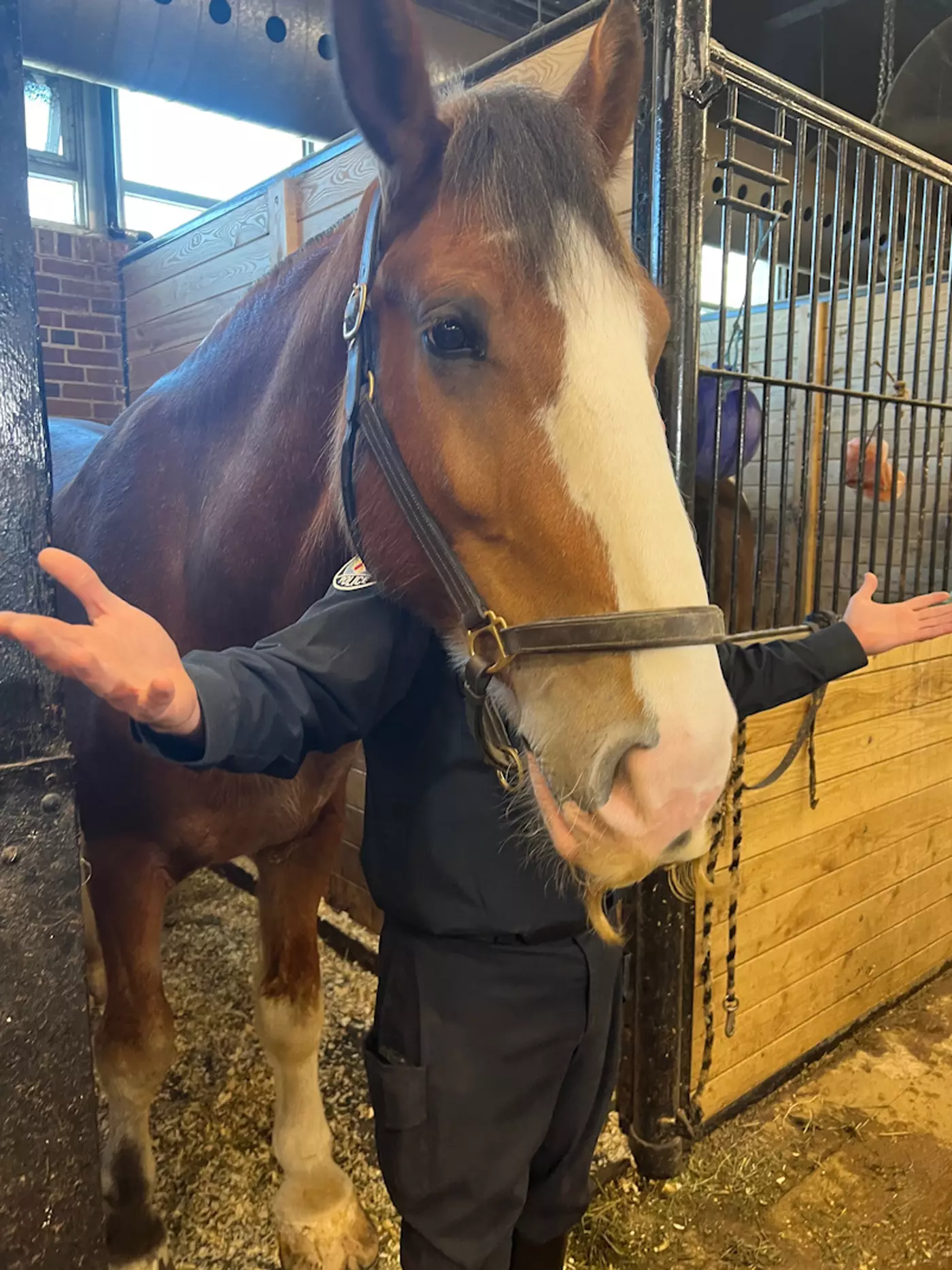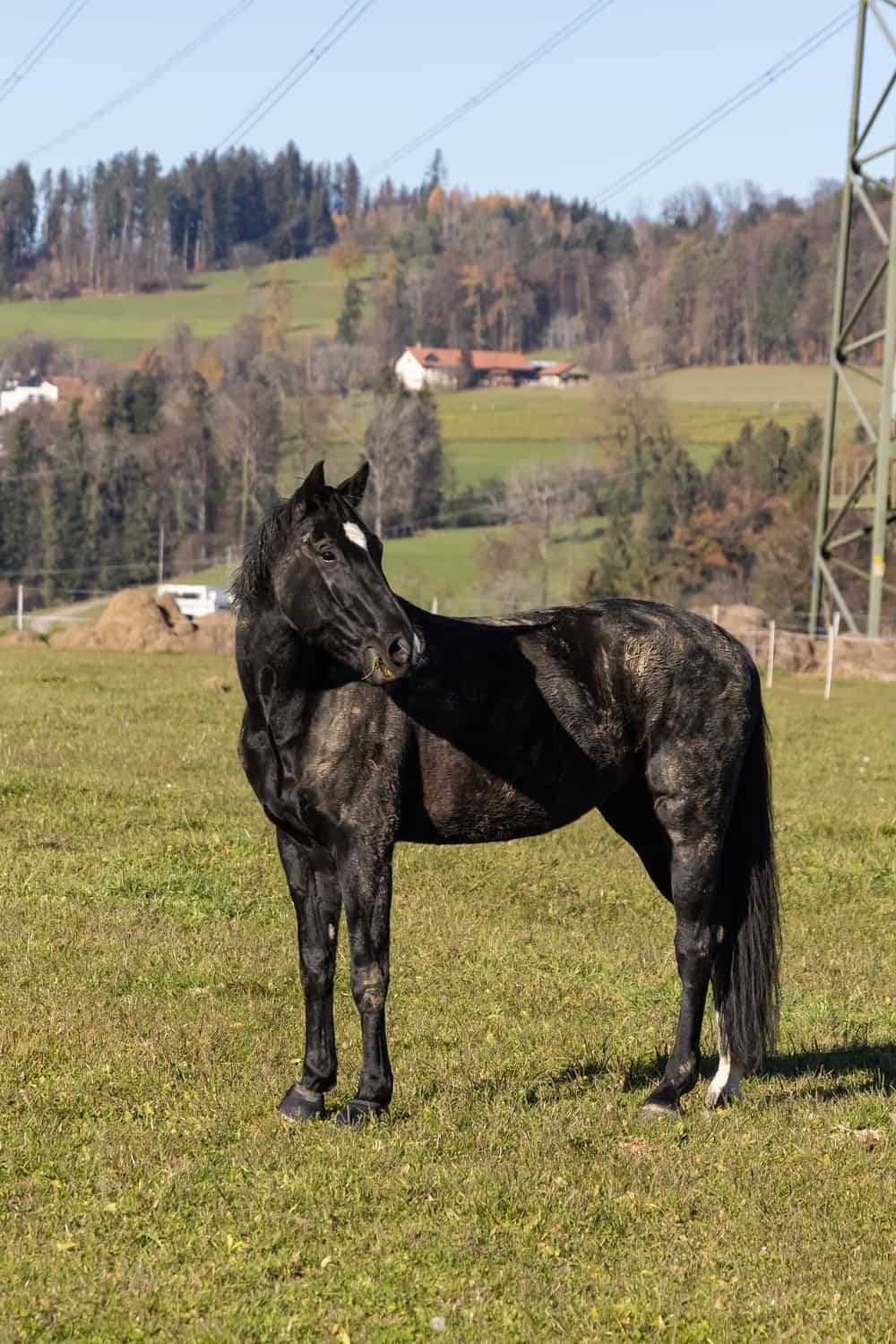The other day, I conversed with a language student who wanted to understand what scruffy meant in a lesson about personal looks and appearance.
I used myself as an example to show that a man with a longer than face-trimmed beard may be called scruffy. We also looked at some dog breeds like terriers who share a similar stringy-haired appearance.
Try to envision the typical English mustache on a horse. Although this sounds like something that you might find amongst some photoshopped images cycling the internet, it is part of some breed’s genetic makeup and serves an actual purpose.
What Are Sensory Hairs?
Every horse has sensory hairs around its muzzle and eyes to help them determine safe distances from its surroundings. Horses are not the only mammals with these features but benefit from this adaptation that helps compensate for their blind spots.
The British Horse Society recognizes sensory hairs as “an important sensory organ for the horse [that] should not be removed for cosmetic purposes.”
Removing a horse’s whiskers can easily cause a horse to experience stress and confusion due to an uncertain perception of the space around them. Therefore, it seems rather cruel and inconsiderate for a horse owner to attempt to remove these hairs for aesthetic purposes.
In addition to whiskers, some horses don an actual mustache that grows on their upper lip. Scientifically, the equine mustache results from a more than active hair gene.
The other amusing aspect of the classy equine stache is that it can affect both males and females because the hair gene is not sexually specific. Can you imagine sharing beard cream with your significant?
In addition, the hair gene equally affects the entire horse’s body. The hair gene is cumulative rather than restrictive; therefore, the horse with this genetic makeup will have excess hair all over.
Which Horse Breeds Don A Mustache?
Every animal is different, and although genetics are privy to plenty of variation, some horse breeds are more susceptible to excess hair across their body.
The hair gene is most evident in hairy breeds such as Clydesdales, Gypsy Vanners, and Shires. You may hear people among the equestrian community refer to these particular breeds of horses as draft horses.
Draft horses are both strong and intelligent and must usually meet specific build and weight requirements to be considered one. These horses have played an essential role throughout agricultural history and have proven their worth to farmers worldwide.
The Clydesdale, Gypsy Vanner, and Shire breeds share their use and origin in common. All three breeds hail from the British Isles, have a muscular stature and are unbelievably strong.
While some sources indicate that hair growth can be due to malnutrition or an unhealthy hormonal balance, it is more often an adaptation that some breeds benefit from for grazing purposes.
Now, That’s Hairy!
The hair gene is quite a hairy tradition. Typically, you will notice that breeds of horses associated with colder and wetter climate regions such as Britain and northwestern Europe are more prone to having extra hair.
Thanks to the ingenuity of mother nature, people and animals alike have the propensity to adapt to our given natural habitats. For this reason, it would be pretty rare to find a lightweight horse with feathered hooves and extra hair on its lower limbs.
A horse with feathered hooves is not to say that it shares characteristics of a bird. Instead, it is a mode to describe the extra-long hair on the horse’s lower legs down to its hooves, sometimes covering its feet completely.
Horse owners should avoid trimming the excess hair on a horse as these features all include a specific purpose. For example, feathered hooves on draft horses work to keep the horses’ legs “warm during winter and channel water away from the back of the pastern and heels.”
Long hair on a horse’s hooves also likely protects them from the dense and rocky terrain they often work and live. If these breeds did not have this, they would be more susceptible to the pain and discomfort of walking barefoot through a briar field full of thornbushes.
The Mustache
The gentlemanlike appearance is much more than an equine fashion statement. Though the relatively small proportion of horses with a mustache indeed makes for a great photo opportunity, the hair on their upper lip helps them survive during winter conditions.
As a horse owner, you should refrain from the temptation of rubbing in some beard wax to style your horse’s stache. This upper lip hair serves a function and is self-groomed.
The mustache on your horse will often become noticeable during the winter months and tends to shed along with the rest of its coat during warmer climates.
This unique feature helps a horse find grass to eat in low-light conditions and snow-covered terrain. This hairy feature may also help the horse select the most nutrient-rich grass type to graze on.
The same hair gene responsible for a mustache could also cause belly hair, thicker tails, and double manes. When left unclipped, this extra hair may cause one to giggle, but it’s as natural as it gets.
Mustached Horses In The Community
If you think that a horse strutting around with a mustache is a bunch of trickery, then I urge you to look at some real-life examples in the world around us.
For starters, I’d like to introduce you to Draper; he is a uniformed horse in the Toronto Police Department. He is a Clydesdale horse known for putting smiles on people’s faces and perhaps even the cause for some uncontainable giggles.
If you still find it hard to believe, PBS has even released some footage about Gypsy Vanner horses and their propensity to rocking stylish mustaches throughout the cold season.
The Movember movement had the pleasure of having Mercury, a Shire horse, as an influential mascot in its attempt to raise male cancer awareness.
Horses have always had a significant role in people’s lives, and we have seen how some breeds do it with style. A horse rocking a mustache might have sounded farfetched before, but I hope you understand that it is genuine and an essential adaptation for some breeds.
More Horsey Curiosities
Now that we all feel enlightened and even a little light-hearted after our newfound knowledge of mustache-toting horses, here are some additional fun facts about these magnificent creatures that you may or may not have known.
#1: Sleeping Statues
Horses can sleep standing up. They may lay down for periods of deeper sleep throughout the day; however, they have adapted the ability to lock their legs in a standing position so they may rest without falling over.
#2: Toothy Giggles
If you have ever seen a horse give you a big cheeky grin, then you have probably noticed its teeth. Although a horse may never win an award for prettiest teeth, dental care is critical in equine health, and it is even possible to estimate a horse’s age by looking at its teeth.
#3: The Arabian Short
Arabian horses are one of the earliest breeds domesticated by people known for their strength and stamina. Some Arabian horses have one less rib and vertebral bone than the typical skeletal structure of horses.
Regardless of this shortage, these horses are some of the finest riding companions in the world.
#4: The Handy Horse
The measurement standard for a horse is known as a hand. A horse is typically measured from the ground to the top of its shoulders in increments of 4 inches.
Ponies and horses vary in their muscular structure, and some associations use height standards to differentiate between the two equine types. For example, according to British competitive standards, a horse under 14.2 hands is considered a pony.
In general, horses grow between 13.3–17.3 hands tall, although working draft horses can stretch up to 18 hands tall depending on genetics.
#5: Eating Feels
Due to the placement of its eyes, a horse almost has a 360-degree field of vision. However, a horse has two blind spots: one directly behind it and the other at the base of its muzzle.
Horses have adapted sensory hairs such as whiskers or mustaches to feel around for their food. A horse can also use its sense of smell to decipher what type of food you are placing at the base of its mouth.
#6: Throwing Down
Horses are physically unable to vomit. Due to “the specific way the esophagus connects to the horse’s stomach,” the muscles surrounding it are too tight to allow a horse to throw up.
Besides its anatomical restrictions for vomiting, researchers can only speculate why a horse cannot vomit. Some think it is for protective purposes, while others feel that their food choice’s fuss takes the need to vomit away.
Conclusion
Next time you go for a carriage ride or are near a draft horse, make sure you have your phone ready because you may get the privilege of taking a selfie with a mustached horse.
If you are the owner of a mustached beaut, then remember that this hairy feature serves an essential function for your horse, so you should refrain from clipping it.
Please remember to share any questions or concerns about mustaches on horses in the comment section below. Also, if you are the proud owner of one of these stylish creatures, please share a picture.
